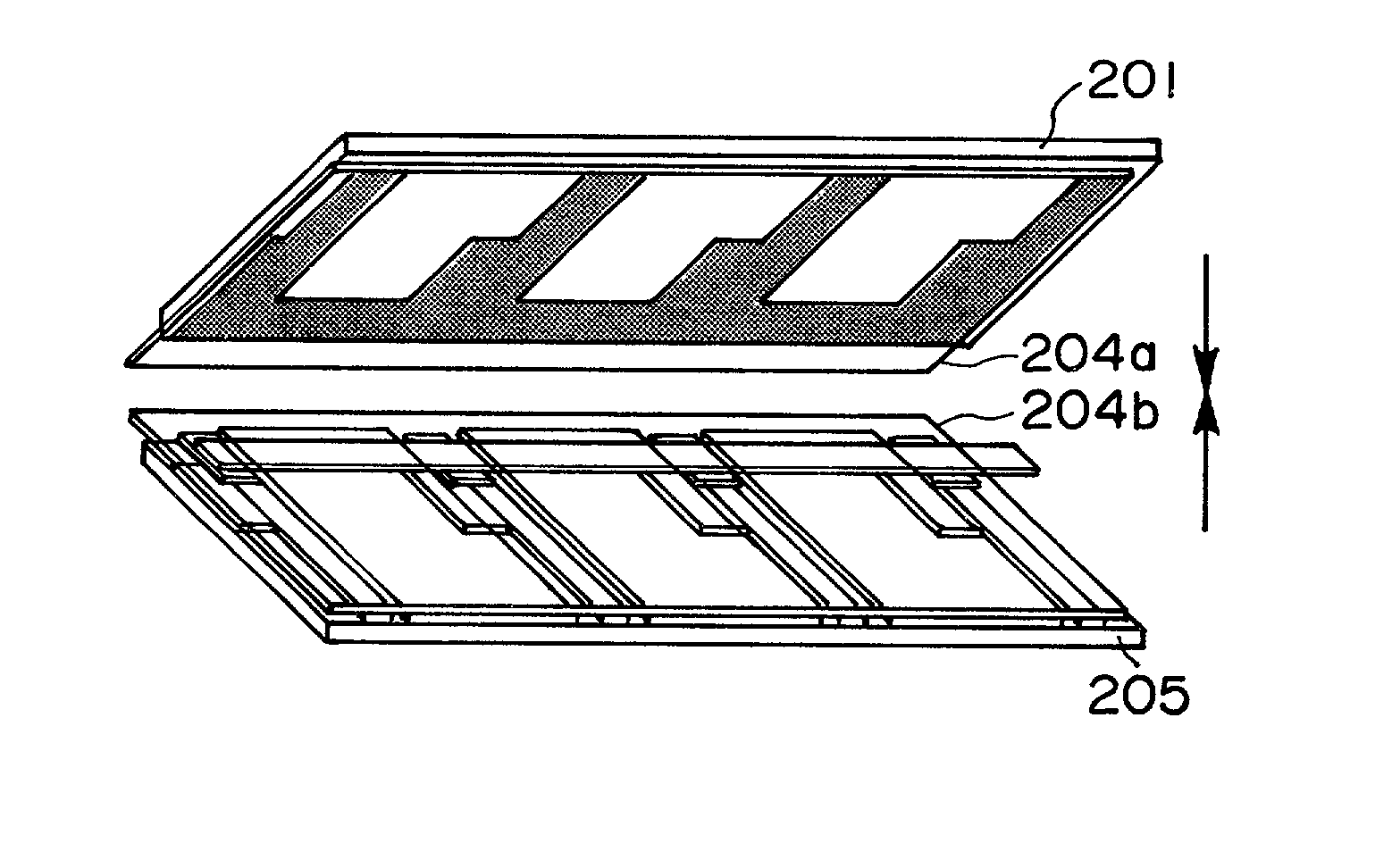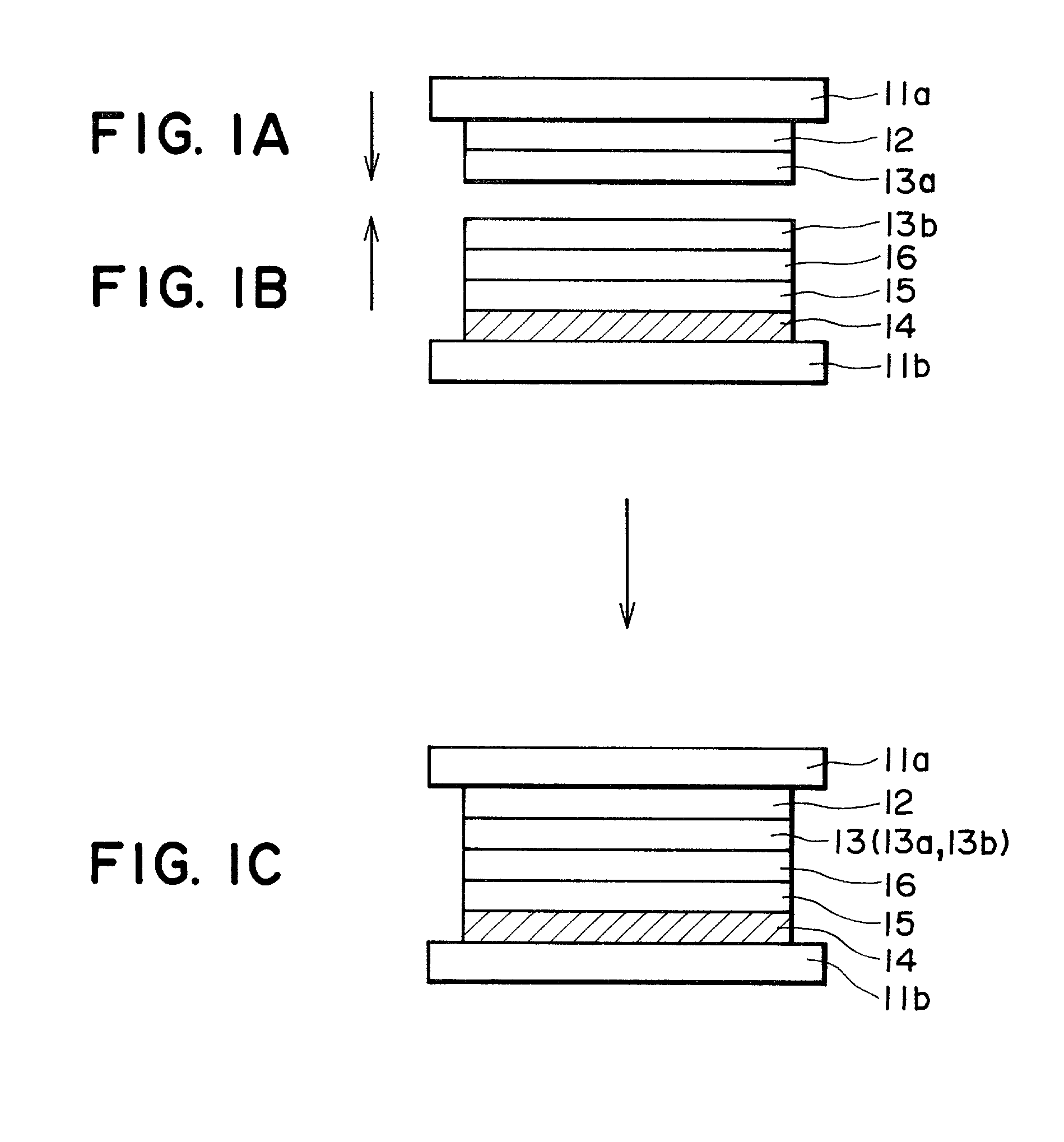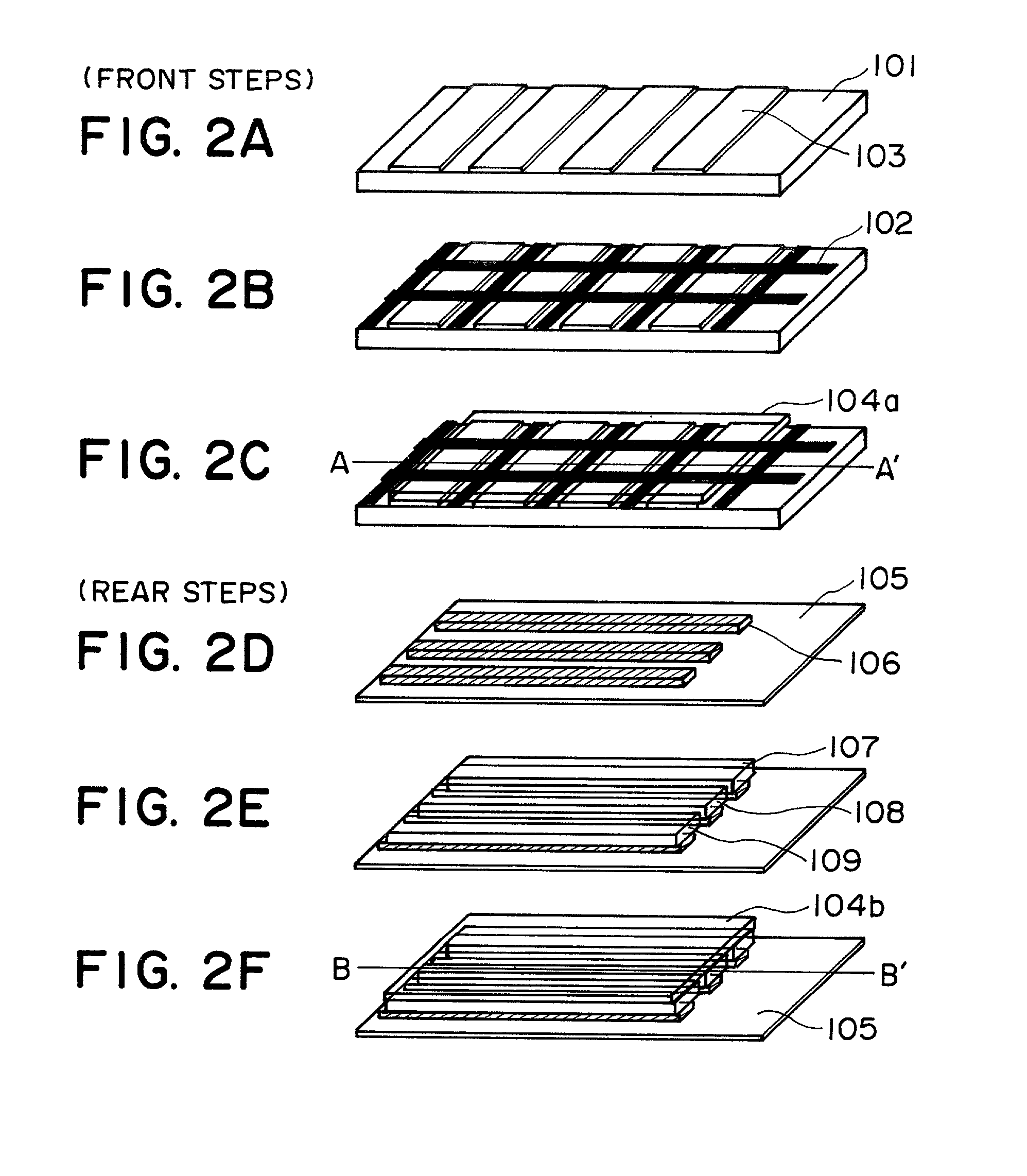Organic luminescence display device and process for production thereof
a luminescence display and organ technology, applied in the direction of identification means, instruments, adhesive processes with surface pretreatment, etc., can solve the problems of poor durability of film laminate structure, difficult to produce high-definition full-color display panels, and subjected sealing
- Summary
- Abstract
- Description
- Claims
- Application Information
AI Technical Summary
Problems solved by technology
Method used
Image
Examples
example 2
[0064] A direct viewing-type passive full-color organic luminescence display device was prepared through steps as shown in FIGS. 2A through 2J, similarly as in Example 1, except that a pre-baking step was inserted before the application of the two substrates.
[0065] Thus, referring to FIGS. 2A-2J, a glass substrate 101 (as a front substrate) was first provided with ITO transparent electrodes 103 by vacuum deposition (FIG. 2A) and then provided with a resinous black matrix 102 of a high-resistivity black resist (made by Fuji Film Olin K.K.) through a lithographic process (FIG. 2B). Separately, a 0.5 wt. % in toluene of TPA-6 was applied by extrusion coating. The thus-treated front substrate 101 was prebaked at 40.degree. C. to form a 0.05 .mu.m-thick first hole-injection layer 104a (FIG. 2C) and stored in a dry nitrogen gas atmosphere.
[0066] Separately, a rear glass substrate 105 was provided with Al metal electrodes 106 (FIG. 2D), and then provided with 0.05 .mu.m-thick luminescence ...
example 3
[0069] A direct viewing-type passive full-color organic luminescence display device was prepared through steps as shown in FIGS. 3A through 3H.
[0070] Referring to these figures, a glass substrate 201 (as a front substrate) was first provided with a resinous black matrix 202 of a high-resistivitity black resist (made of Fuji Film Olin K.K.) (FIG. 3A) and then with ITO transparent electrodes 203 by vacuum deposition (FIG. 3B), which was then coated by extrusion coating with a 0.5 wt. %-solution in toluene of TPA-6, followed by pre-baking at 40.degree. C., to form a 0.05 .mu.m-thick first hole-injection layer 204a (FIG. 4C). The front substrate 201 thus-treated was then stored in a dry nitrogen atmosphere.
[0071] Separately, a rear glass substrate 205 was first provided with metal electrodes 205 each having a laminate structure of an Al--Li alloy layer on an Al layer (FIG. 3D), and then successively provided with thin film transistors 210, data electrodes 211, an insulating layer 213 an...
PUM
| Property | Measurement | Unit |
|---|---|---|
| luminance | aaaaa | aaaaa |
| temperature | aaaaa | aaaaa |
| temperature | aaaaa | aaaaa |
Abstract
Description
Claims
Application Information
 Login to View More
Login to View More - R&D
- Intellectual Property
- Life Sciences
- Materials
- Tech Scout
- Unparalleled Data Quality
- Higher Quality Content
- 60% Fewer Hallucinations
Browse by: Latest US Patents, China's latest patents, Technical Efficacy Thesaurus, Application Domain, Technology Topic, Popular Technical Reports.
© 2025 PatSnap. All rights reserved.Legal|Privacy policy|Modern Slavery Act Transparency Statement|Sitemap|About US| Contact US: help@patsnap.com



